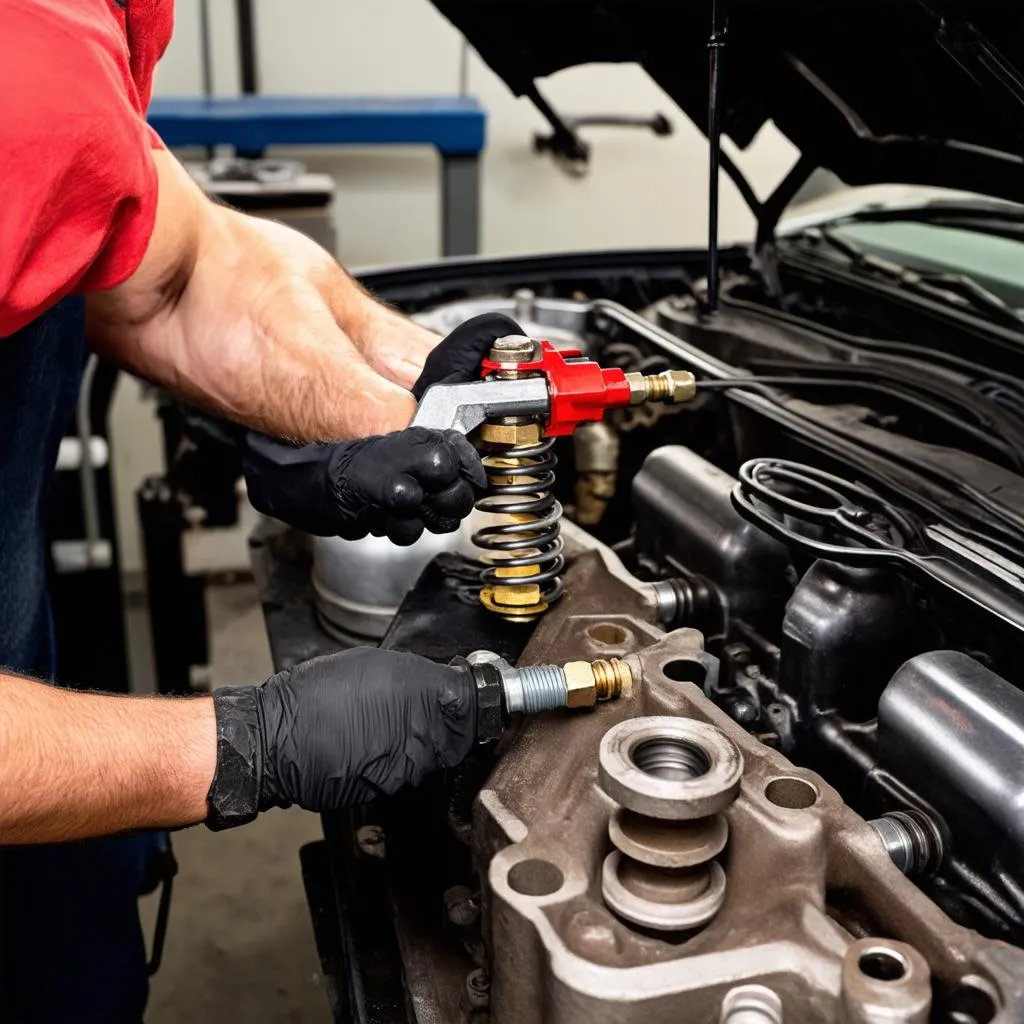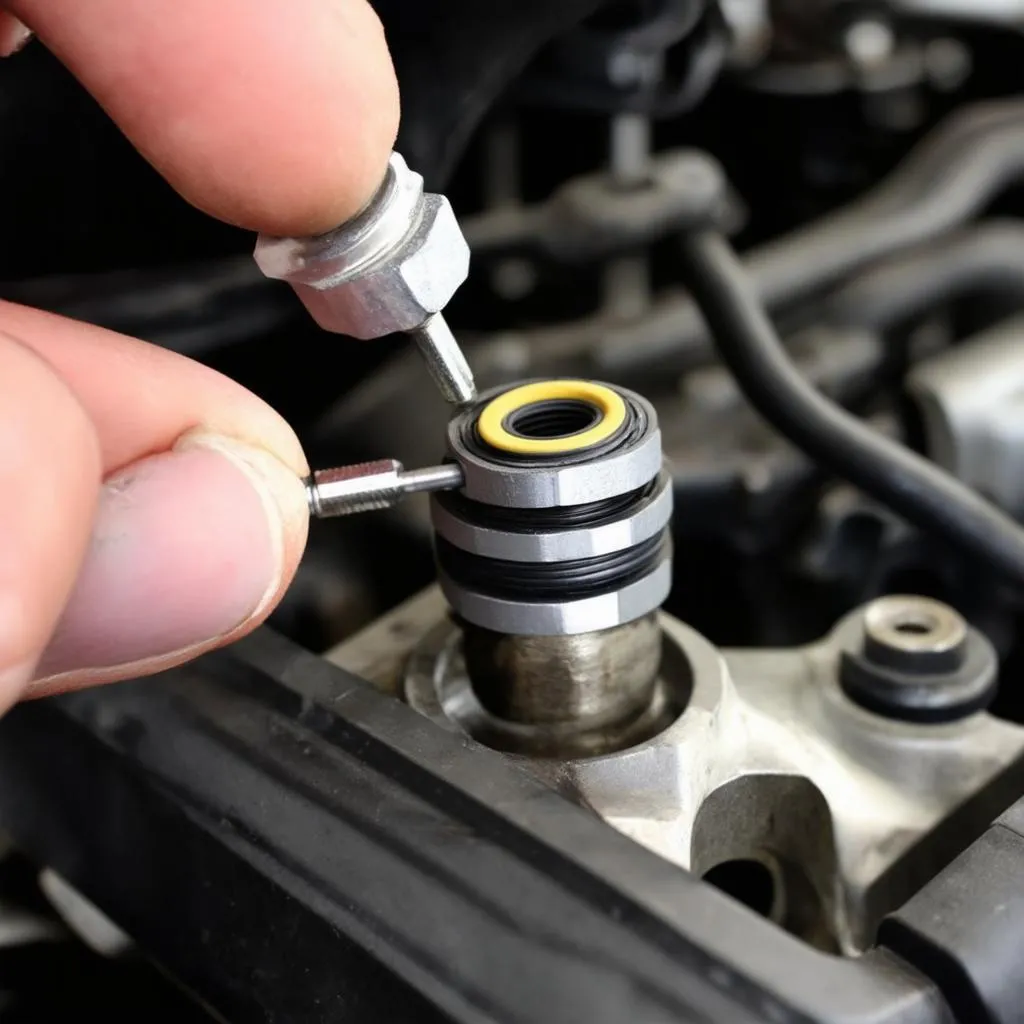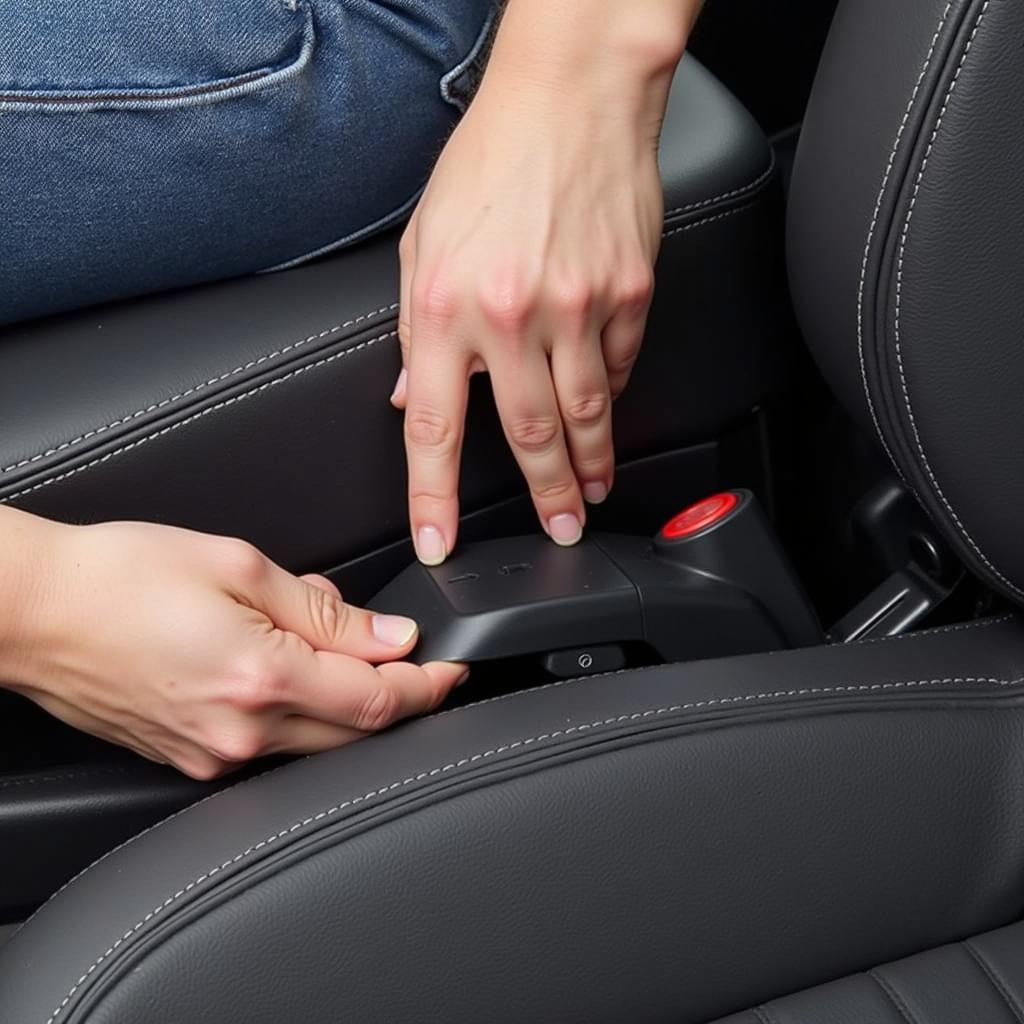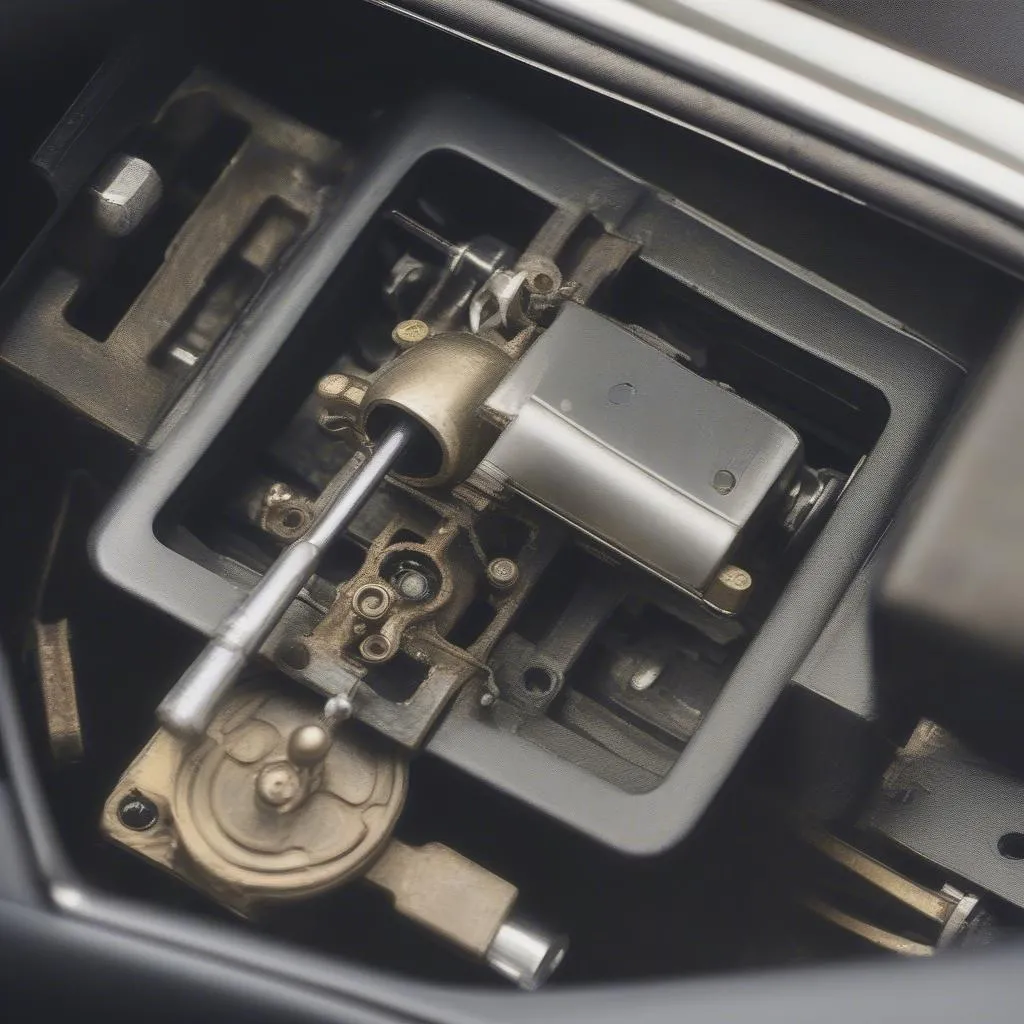If you’re tackling a 2013 Mercedes E350 stem seal replacement, having the right tools can make all the difference. While this job can seem daunting, it’s manageable with the proper knowledge and equipment. Let’s dive into the specifics of this repair and explore the essential tools that will help you achieve a successful outcome.
Understanding the Importance of the Right Tools
The valve stem seals on your Mercedes E350 play a critical role in preventing oil from leaking into the combustion chamber. When these seals wear out, you might notice symptoms like burning oil, blue exhaust smoke, or increased oil consumption.
Replacing these seals requires precision and care, which is why having the appropriate tools is essential. Using the correct tools not only ensures a proper seal but also helps prevent damage to the delicate valve train components.
Key Tools for the Job
While a general automotive toolset will cover some basics, there are specific tools designed for this task that significantly improve the process. Here’s what you’ll need:
- Valve Spring Compressor: This tool compresses the valve springs, allowing you to remove and replace the valve stem seals. Look for a compressor specifically designed for overhead cam engines.
- Valve Stem Seal Installer: This tool ensures that the new valve stem seals are installed squarely and to the correct depth. Using the right installer prevents damage to the new seals and ensures a proper fit.
- Magnetic Retrieval Tool: Dropping a valve stem seal down the valve guide is a real possibility. A magnetic retrieval tool will be your savior in this situation, allowing you to retrieve the seal without disassembling the entire cylinder head.
- Torque Wrench: Properly torquing the valve cover bolts is crucial to prevent leaks. Using a torque wrench ensures the bolts are tightened to the manufacturer’s specifications.
Additional Helpful Tools:
- Valve Spring Compressor Adapters: These adapters are designed to work with your specific valve spring compressor and provide a secure grip on the springs.
- Pliers: Needle-nose pliers are useful for various tasks, such as removing and installing small clips or hoses.
- Socket Set: A comprehensive socket set is essential for removing and installing bolts of various sizes.
 Valve Spring Compressor
Valve Spring Compressor
Frequently Asked Questions
Q: Can I replace the valve stem seals without removing the cylinder head?
A: Yes, it’s often possible to replace valve stem seals without removing the cylinder head on a 2013 Mercedes E350. This is typically done by using compressed air to keep the valves closed while the springs are compressed. However, this procedure requires experience and the right tools.
Q: How difficult is it to replace valve stem seals?
A: While not impossible for a skilled DIYer, this job is best left to experienced mechanics. It involves intricate work and requires specialized tools to complete successfully.
Q: How long does it take to replace valve stem seals?
A: The replacement time can vary depending on the mechanic’s experience and access to the necessary tools. On average, expect the job to take several hours.
Important Considerations
- Consult Your Owner’s Manual: Before starting any repair, always consult your vehicle’s owner’s manual for specific instructions and torque specifications.
- Quality Parts: Use high-quality replacement valve stem seals from a reputable brand. Inferior seals can lead to premature wear and repeat leaks.
- Professional Assistance: If you’re uncomfortable tackling this job yourself, don’t hesitate to seek professional assistance. An experienced mechanic can ensure the repair is done correctly and efficiently.
 Valve Stem Seal Installer
Valve Stem Seal Installer
Conclusion
Replacing the valve stem seals on your 2013 Mercedes E350 requires the right tools and expertise. Using the correct equipment ensures a successful repair and helps avoid potential damage to your engine. If you’re unsure about any aspect of this procedure, it’s always best to consult a qualified mechanic. Remember, using the right tools can save you time, frustration, and potentially costly repairs in the long run. For a wide range of automotive diagnostic tools and resources, visit CARDIAGTECH.com.


